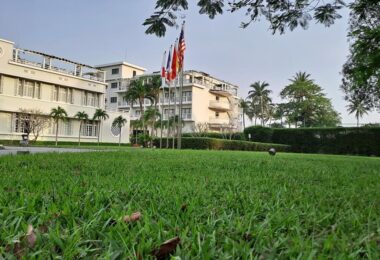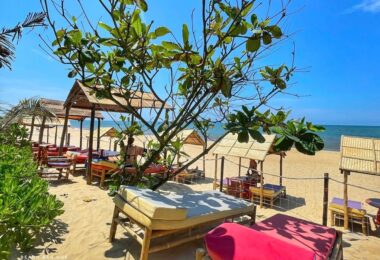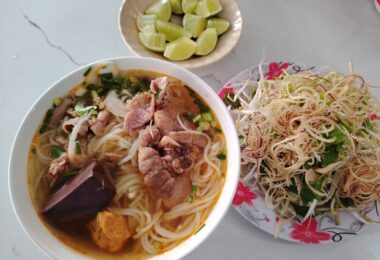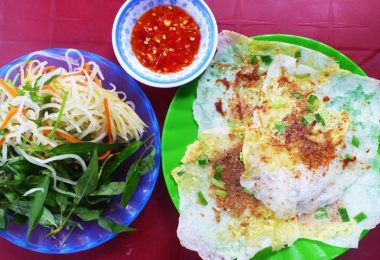With a length of 740m, Phan Dang Luu Street from Tran Hung Dao street to Mai Thuc Loan road now has more than 212 shops and 25 households.
This road is one of the busiest streets in Phu Hoa ward, Hue City, with good infrastructure, and environmental sanitation, so this area is lovely to go shopping for electrical products, traditional herbs, and embroidery pictures.
History of Phan Dang Luu Shopping Street
If Hue has its long history, each street in this city also contains its transformations.
Formed in the late nineteenth century, undergoing many different names from Cua Dong Street, Gia Long Street, Phan Boi Chau Street, from 1977 to the present, the street has officially named Phan Dang Luu. With the nearly two-century history of this road will reveal many interesting things.
Phan Dang Luu Street was situated at a suitable location near Dong Ba Market and the old Citadel, so it has a lot of advantages to develop the business and trading.
Leather handicraft, porcelain, carpentry goods, and mainly traditional Chinese traditional medicine of Chinese families developed actively.
In parallel with Phan Dang Luu street is Huynh Thuc Khang street (formerly known as Hang Be street), which could come by waterway to Bao Vinh – the busy old town.
Those economic effects contributed to the establishment of the trading route of Phan Dang Luu. However, the only traditional medicine of Chinese people can maintain until now.
On the Phan Dang Luu Street, there are three historical sites which are noticeable, including:
- The French-Vietnamese Dong Ba Primary School was built in 1905 at the beginning of Phan Dang Luu Street. French, Chinese, and Vietnamese were used to teach at this school. Also, Nguyen Sinh Cung (the former name of Ho Chi Minh) studied from 1906 – 1908.
- The second noticeable site at this road is Ba Tuan Theater, which was built by the wife of Dang Ngoc Oanh in 1923; another name of this theater was Dong Xuan Lau ( the building forward the spring). This theater was a place showing Tuong, Cai Luong, which were loved by the local people. However, this relic disappeared; it just remained in the memories of some old-age people.
- Another essential place is a bookstore which was used to be a secret site by Le Duan – a Vietnamese communist politician, a former General Secretary of Vietnam. At present, this relic is 141 Phan Dang Luu Street, Hue City, Vietnam.
Phan Dang Luu Street at present
Phan Dang Luu now has a new vitality and a modern look. Many shops sell modern products, including speakers, phones, washing machines, electricity lights… and here are some traditional medicine shops owned by the Chinese people.
Standing at the corner of Tran Hung Dao and Phan Dang Luu Street to look at it, we will find this street is different from other roads in Hue City: many marketing signs hang vertically next to the tall buildings, and Chinese characters still on few shops because the owners are the Chinese coming here to live for a long time.
Besides selling the main products of electronics, some shops sell worshipping items, tailor tools. All shops are ranged succinctly, which shows the high business skills and civilized style of the people living on this street.
And, a coffee shop on this street becomes famous for a lot of people in Hue City, which is Suu Café. This shop is opened from 4:30 am when it is still foggy, but people have sit full of tables.
All customers enjoy the coffee and early morning style under a big tree, and they feel happy to chat with each other.
During the day, Phan Dang Luu is busy to trade and active with the people coming and going out of the shops and the street.
At night, the color of business signs of the shops makes the road more colorful, mixing the old and recent life.
Like many other streets in Hue City, Phan Dang Luu is coming into the two dimensions of time, the old and new, the traditional and modern. These interplays happen every day on this road.
The relics of time, the nostalgic shadows, and old alleys mingle with the new breath of the street, creating the different look of Phan Dang Luu Street becoming a typical part of Hue City.




